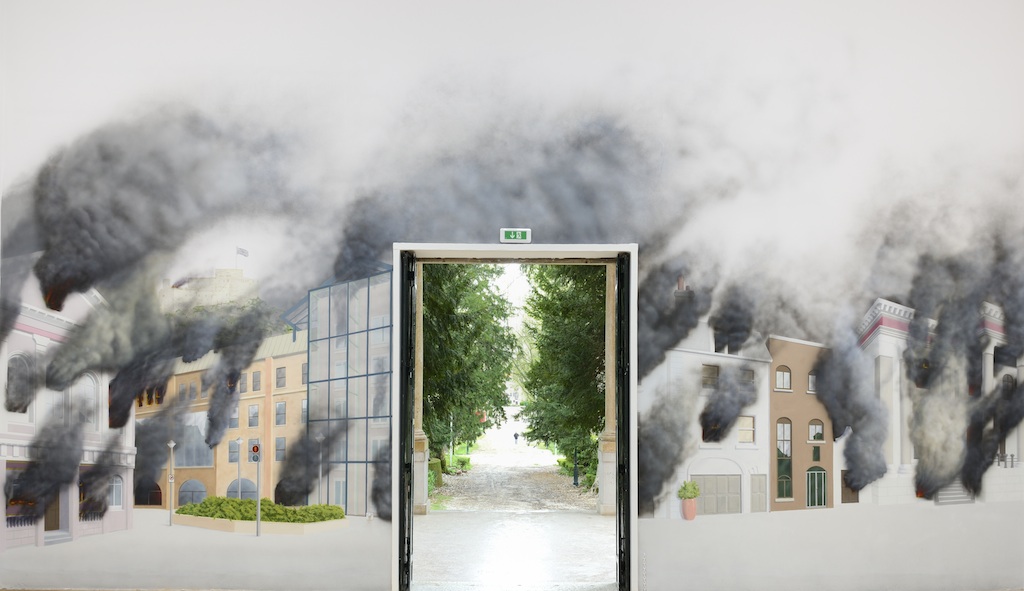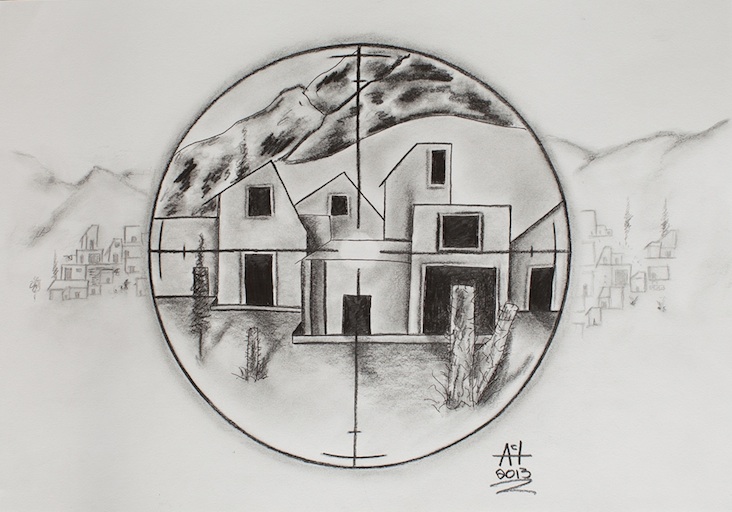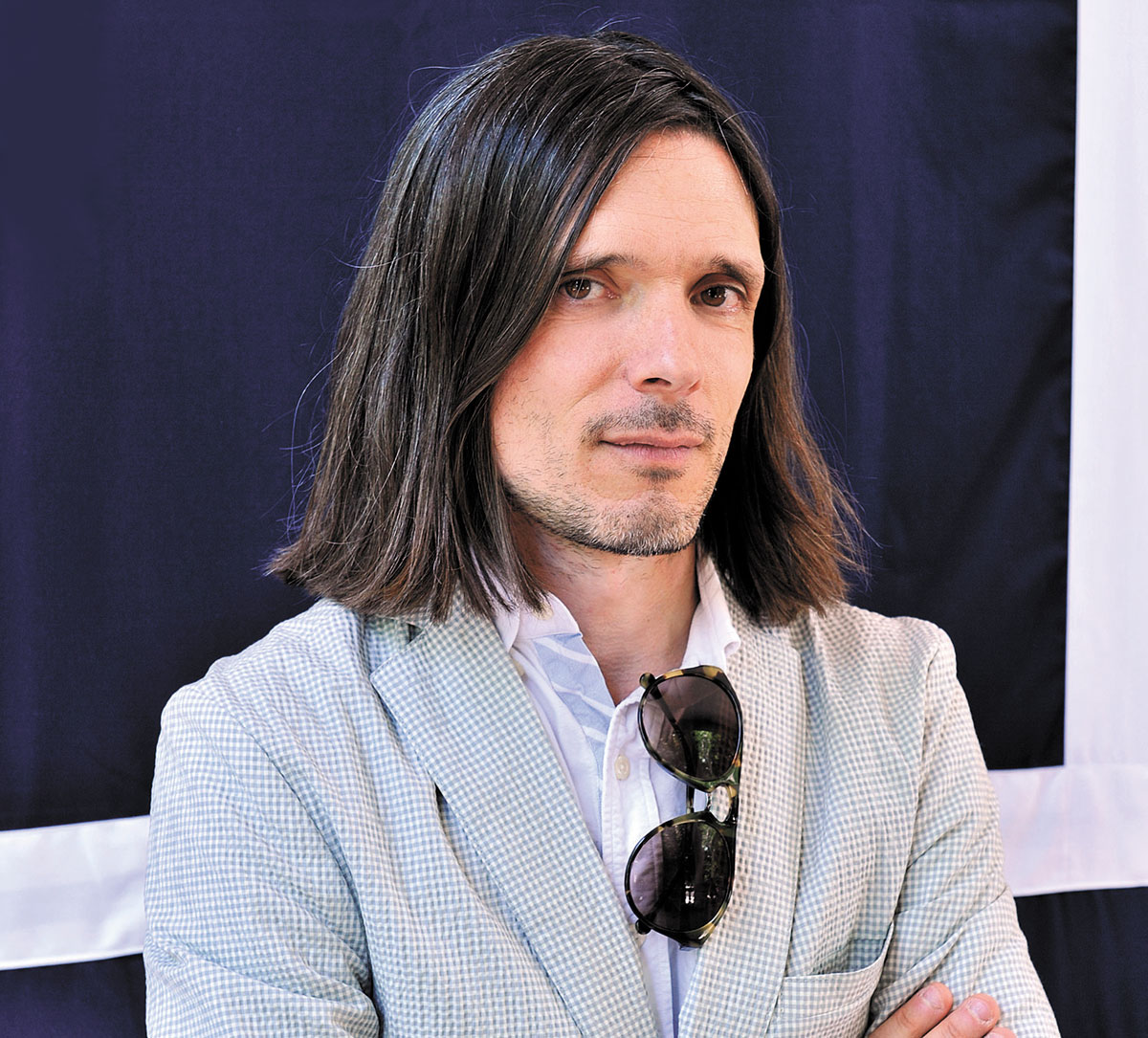


As you may recall, Jeremy Deller represented Britain at last year’s Venice Biennale and a distilled version of English Magic, his British Pavilion show, is now installed in the William Morris Gallery in Walthamstow. It's an especially relevant first stop on a tour that continues to Bristol and Margate, since Morris features large in Deller’s idiosyncratic commentary on British culture.
William Morris is best known as the brains behind the Arts and Crafts movement and designer of those famous wallpaper patterns, but he was also an ardent socialist keen to improve the lot of the poor – not by overturning capitalism, but by giving workers a more equal share. Housed in the Georgian mansion where Morris spent his affluent childhood, the museum is a treasure trove of goodies including furniture, carpets, textiles and stained glass by the Victorian entrepreneur and his associates.
The abstraction of the banners speaks more to art historians than to the man in the streetDeller [3]’s exhibition starts on the ground floor and infiltrates the cafe, stairs and landing. Filling one wall is a mural featuring Morris as a vengeful colossus rising from the turquoise waters of the lagoon to pluck Roman Abramovich’s yacht from its moorings and cast it into the depths (main picture). In 2011, the monstrous vessel not only laid claim to the territory, but prevented visitors from strolling along the promenade to the Gardini, where the Biennale is held. Deller’s message is clear: money cannot be allowed to dominate the proceedings.
A display of the coupons and vouchers issued by the post-Soviet regime during the privatisation of state-run enterprises reminds us that many Russian oligarchs amassed their fortunes through nefarious dealings. However, they're not the only targets of the artist’s wrath.
 Money rather than yachts are parked in the island tax haven of Jersey and another mural (pictured above) shows the capital, St Helier, going up in smoke. The conflagration is predicted for 2017, but the banners egging on the rioters have already been designed by Ed Hall, a specialist in campaign banners. The mask-like faces are based on a tax avoidance diagram and a deliberately opaque financial scheme known as the “Jersey Cashbox".
Money rather than yachts are parked in the island tax haven of Jersey and another mural (pictured above) shows the capital, St Helier, going up in smoke. The conflagration is predicted for 2017, but the banners egging on the rioters have already been designed by Ed Hall, a specialist in campaign banners. The mask-like faces are based on a tax avoidance diagram and a deliberately opaque financial scheme known as the “Jersey Cashbox".
 Hung on the stairwell, the banners lead you upstairs to a group of drawings (pictured right: Basra in my sights by Andy, HMP Everthorpe) made by soldiers who served in Iraq or Afghanistan, but are now doing time in Her Majesty's prisons. Portraits of Tony Blair [4], Dr David Kelly and Alastair Campbell – protagonists in the debate over the pros and cons of going to war against Saddam Hussein – are juxtaposed with scenes of army life which paint a dismal picture. Slumped on a bed against a union flag are two squaddies smoking crack at Wellington Barracks the night before deployment, while under another bed a soldier lies rigid with fear during an enemy attack in Basra.
Hung on the stairwell, the banners lead you upstairs to a group of drawings (pictured right: Basra in my sights by Andy, HMP Everthorpe) made by soldiers who served in Iraq or Afghanistan, but are now doing time in Her Majesty's prisons. Portraits of Tony Blair [4], Dr David Kelly and Alastair Campbell – protagonists in the debate over the pros and cons of going to war against Saddam Hussein – are juxtaposed with scenes of army life which paint a dismal picture. Slumped on a bed against a union flag are two squaddies smoking crack at Wellington Barracks the night before deployment, while under another bed a soldier lies rigid with fear during an enemy attack in Basra.
Meanwhile, on video, a Range Rover is crushed to a pulp and various birds of prey go through their glorious paces in slow-mo, while a steel band plays David Bowie [5]'s The Man Who Sold the World. It helps to remember that, in 2007, Prince Harry and a friend were suspected of shooting two protected hen harriers out of the sky over Sandringham, but no-one was charged.
The Jersey mural is an incitement to riot. Each section of the show – from the ill-gotten gains and excessive influence of the tax-avoiding super-rich, to our ill-considered military exploits and our royals apparently flouting the law by killing endangered species – is, in fact, a potential bombshell. So why does the exhibition feel so terribly tasteful and polite?
 It's partly the lack of an authorial voice – Deller (pictured left) employs others to paint the murals, design the banners and do the drawings – and partly a matter of style. The delicacy and precision of the murals dilutes the rage they depict into a mild “tut” of disapproval; the abstraction of the banners speaks more to art historians than to the man in the street; the anger of the squaddies is lost in the awkward timidity of their pencil drawings, while untangling the relationship between the various video sequences – including birds of prey, Chelsea tractors and footage of the Lord Mayor’s show – requires insider information that isn’t available to all.
It's partly the lack of an authorial voice – Deller (pictured left) employs others to paint the murals, design the banners and do the drawings – and partly a matter of style. The delicacy and precision of the murals dilutes the rage they depict into a mild “tut” of disapproval; the abstraction of the banners speaks more to art historians than to the man in the street; the anger of the squaddies is lost in the awkward timidity of their pencil drawings, while untangling the relationship between the various video sequences – including birds of prey, Chelsea tractors and footage of the Lord Mayor’s show – requires insider information that isn’t available to all.
Deller is no rabble rouser; he likes to keep things subtle, oblique and somewhat fragmented. His target audience is made up of well-informed sophisticates who enjoy unravelling coded information and recognise that, despite its angry subject matter, the work offers no actual threat. That's why the establishment loves him.
Overleaf: watch footage of Jeremy Deller and the making of English Magic
Links
[1] https://theartsdesk.com/users/sarah-kent
[2] https://www.addtoany.com/share_save
[3] http://www.theartsdesk.com/visual-arts/jeremy-deller-joy-people-hayward-gallery-0
[4] http://www.theartsdesk.com/visual-arts/tony-blair-alastair-adams
[5] http://www.theartsdesk.com/search/node/David%20Bowie
[6] http://www.wmgallery.org.uk/whats-on/exhibitions-43/jeremy-deller-english-magic
[7] http://www.amazon.co.uk/Jeremy-Deller-People-Ralph-Rugoff/dp/1853322946/ref=sr_1_3
[8] https://theartsdesk.com/node/28943/view
[9] https://theartsdesk.com/node/596/view
[10] https://theartsdesk.com/node/72279/view
[11] https://theartsdesk.com/visual-arts
[12] https://theartsdesk.com/topics/venice
[13] https://theartsdesk.com/topics/reviews